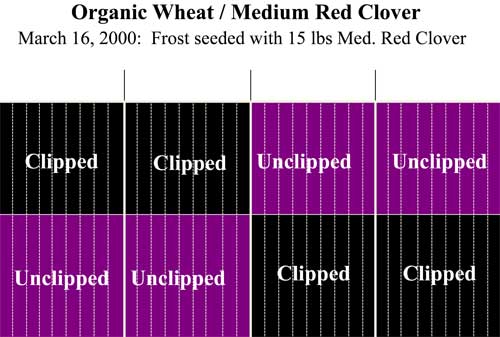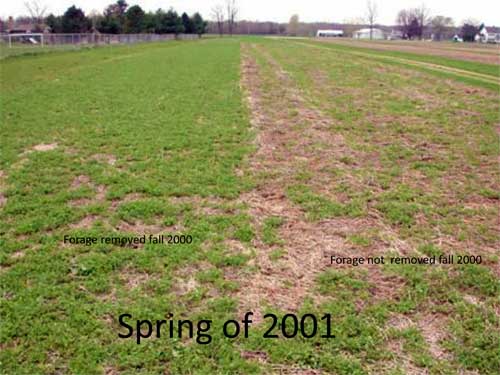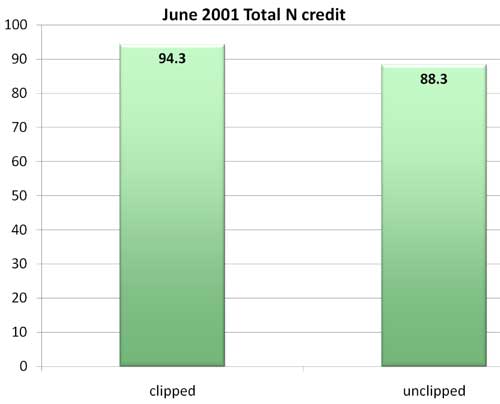Managing red clover that was frost-seeded into wheat
We don’t have a drought everywhere in Michigan!
I recently received a call from a farmer who has an excellent stand of red clover that was frost-seeded into his wheat. Living in southwest Michigan where we haven’t seen any rain in an extended period, I was excited and surprised. I guess it shows that not all of the state is in a drought. The farmer wanted to know the best way to manage his stand of red clover.
Having a good red clover stand can really help your soil and provide some nitrogen for you the following season. Since the wheat in the state has been harvested early this year, red clover can grow for an extended period.
Some management strategies for red clover are:
In middle to late August, mow the red clover.
- Mowing will stimulate regrowth at the crowns.
- It will also remove weeds that have grown after harvest. Cutting the red clover for weed management should be timed when the weeds have not produced viable seeds. Flail mowing the clover is best since it doesn’t result in red clover piles that could smother new growth.
- Since feed for livestock is limited this year, a farmer with a good stand of red clover could harvest the forage and feed or sell it.
- Our research indicates that you will not reduce nitrogen from the red clover if you mow and remove the red clover forage.
When should you control red clover?
- You can use herbicides to control red clover. Red clover is easier to control in the fall with translocation herbicides.
- You can use tillage to control red clover both in the fall or spring.
- Some farmers choose to use a shallow, chisel plow treatment that removes up to 60 percent of red clover in the fall. With this treatment, the remaining red clover provides wind erosion protection into the spring and is easier to control in the spring.
- You can leave red clover throughout the winter and control it in the spring. Some farmers do not like to do this because they plant so early in the season and want their soils to dry out and warm up faster.
Studies we have conducted at Michigan State University and W.K. Kellogg Biological Station indicate that red clover can provide up to 90 lbs/A of nitrogen credit. We conducted a study where we frost-seeded red clover into wheat. In September, we mowed and removed red clover from half of the field and we did not mow and left the other half of the field throughout the winter untouched. Both treatments were controlled by chisel plowing in the spring.

The field had half of the red clover removed and mowed, and the other
half not mowed.

In the spring, the mowed and removed red clover had an excellent stand
as compared to the red clover that was not mowed.
We took pre-sidedress nitrogen tests in June and the results are shown in Table 1.
Table 1. Mowing and removing the red clover from the field did not reduce
the amount of nitrogen credit the following season. Our results actually
showed a slight increase in nitrogen when the red clover was mowed and
removed from the field.

All indicators are that forage feed is in short supply. I’m not sure of the quality of red clover haylage, but these data would indicate that harvesting the red clover will not affect the nitrogen credit given for next year’s crop. This could be an option for some added value to your frost-seeded red clover if you need feed or have a neighbor who would want red clover forage.
Related MSU Extension News article: Seeding a cover crop after a wheat harvest
Additional information
- MSU Extension’s Drought Resources



 Print
Print Email
Email

